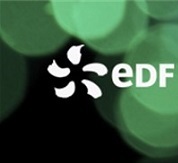When predictive modelling meet participatory simulation: a feedback on potential and issues of a combined approach
Résumé
In the domain of agent-based simulation two main uses of simulation as a decision supportsystem are classically identified and differentiated. The first, let’s call it the "classical"simulation, involves the decision maker as a user of a model, which is viewed as an oraclethat enables him to test the implications of different management scenarios. In the secondviewpoint, participatory modelling and simulation involves several users, the simulationtaking the place of an artefact needed for the interactions among users to take place, theoverall experimentation having broadly three different possible purposes, i.e. eithereducational, the aim of the simulation is then to make participants learn about importantaspect of the modelled system; or either experimental, the researcher aims at eliciting, throughtheir participation to a simulation game, the strategy and decision rules of the participants; orfinally operational, i.e. the simulation is an artefact that aims at helping participants tocoordinate their strategy towards a collective management, for instance of natural resources.Notice that this latter case is in fact quite close to the "classical" use of simulation, acommunity of participants using the simulation as an oracle to test different collectivemanagement scenarios.
In this article, we first describe an experiment based on a simulation model developed on theNetLogo platform in a water management case study and the use of this model in aparticipatory setting. We will then detail the solutions we found to solve the various problemsinherent to such a coupling, and point out the various pitfalls and pratfalls of such a coupling,along with the potential benefits for both participatory simulation and classical modelling.FIG. 1 – Screenshot of the GIS viewpoint of the model built for water management inscarcity period.2 Study about water management in period of scarcity.2.1 Decision support simulation: the SIMPAGE projectOne aim of the study was to set up a decision-support model to study water management inthe Adour-Garonne basin, especially during the low water period. The basin is positioned inthe south west of France. It corresponds roughly to a 1/5th of the French metropolitanterritory. It includes 120.000 km of rivers and 634.000ha of irrigated fields. Water scarcity isfrequent in this basin with an annual deficit in water estimated to 300 millions of m3. Inperiod of scarcity, the needs of the various water users (farmers, industries, hydroelectricproducers and potable water managers) become conflictual, the individual and collectiveobjectives being eventually contradictory (Ostrom et al., 1994). In order to solve theseconflicts, an institutional framework was set up in which the higher authority - the prefect -may punctually limit the water consumption of several actors or request dam managers torelease water into the river.As the model was intended to be used for decision-support, it was important that theinterfaces could be well understood by the different users. When building this descriptivemodel, we choose to put much efforts on the spatial representation of the Adour-Garonnebasin in the model. For this, we assumed that a cartographic GIS-like representation of themodel's environment was likely to allow a consistent analysis of the simulation results by theend-users. The first step was thus to integrate in the model the shape and river network of thewatershed and major geographic points (townships, water uptake points,...).The second step was to add the agents in the environment. There are five kinds of agents,based on the different actors identified in the watershed (Saqalli et al. 2009): farmers wateringtheir fields, industries using water in manufacturing process, dam managers handling the
In this article, we first describe an experiment based on a simulation model developed on the NetLogo platform in a water management case study and the use of this model in a participatory setting. We will then detail the solutions we found to solve the various problems inherent to such a coupling, and point out the various pitfalls and pratfalls of such a coupling, along with the potential benefits for both participatory simulation and classical modelling.
| Origine | Fichiers produits par l'(les) auteur(s) |
|---|

